What is a Pipe: – The pipe is pressure tight circular hollow section that used in piping systems to transport gases or fluids.

Steel Pipe with Large Diameter
What is a Tube: – Over the internet, you will find that tube is a circular structural member and the confusion start from here. In oil and gas industries, tubes are not just used as a structural part but also used in the heat exchanger and fired heater for a process application.
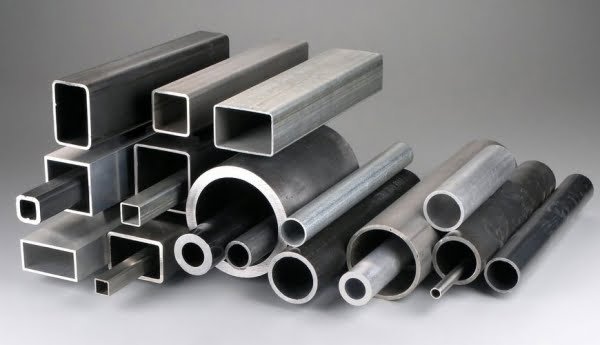
Steel Tubes
Shape:-
The biggest difference between tube and pipe is their shape. Pipes are always round, whereas tubes can be square, rectangular or round.
Size Dimensions:-
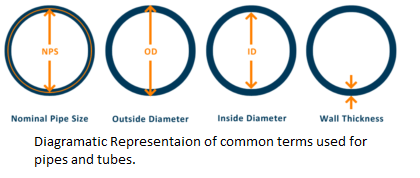
The other difference between pipe and tube is the critical dimension used to describe the pipe size or the tube size. Pipes are generally measured by the inside diameter (ID), often called the “nominal” diameter, and a “schedule”, which refers to the wall thickness whereas for tubes, the outer diameter (OD) and wall thickness, which are exact measures in inches or millimeters roughly corresponds to the tube size.
For tubes, the difference between the outside diameter and the wall thickness, multiplied by two, defines the inside diameter of the tube.
Market Price:-
Prices of pipes are relatively lower than steel tubes. Tubes have higher price due to productivity, strict tolerances and inspection requirements.
Delivery Time:-
Delivery time for pipes can be short compared to tube which is generally longer.
Wall Thickness:-
Pipe wall thickness is expressed in schedule number (most common are Sch 40, Sch STD., Sch. XS/XH, Sch. XXS – but other schedules are possible, such as 5, 10, 20, 30, 60, 100, 120, 140, 160). Tube wall thickness is expressed in millimeter, or inches, or BWG (Birmingham wire gauge.) for thinner wall thicknesses, whereas larger measures are expressed with fractional or inch indexes.
Joint Connections:-
For pipe it is laborious to ensure duration. The most common are beveled and plain ends, however for tube it is a quick connection on the site (threaded and grooved ends, couplings, etc).
Materials:-
Most common materials used for pipes are carbon (API 5L, ASTM A106 / A53) and low alloy steels (ASTM A335). And for tubes, alloy steel onwards (ASTM A209, A213).
Production:-
Pipes are produced on large scale (high yield tons / hour) according to highly productive processes. Tubes are produced in small lots (low yield) due to relatively small dimensions and cumbersome inspection and quality control procedures throughout the manufacturing process.
Tolerances: –
Pipe tolerances are set but not too restrictive. Tube tolerances are very strict – (Production process is generally lengthy and involves many quality checks around key dimensional parameters such as straightness, roundness, wall thickness, surface, etc.).
Sturdy: –
Tubes are stronger than pipes.
Surface Finish: –
At least one of the pipe surfaces is not smooth. Generally the outer and inside surfaces of the tubes must be smooth.
Diameter: –
The outside diameter of pipe up to size 12” is numerically larger than corresponding pipe size. Outside diameter of tubes is numerically equal to the corresponding size.
Availability: –
Pipes are available in the small bore as well as the big bore. Normally small-bore tube is used in process piping. For structural use, tubes are available in custom sizes.
Applications: –
Pipes are used in all process fluids and services. Tubes are generally used in tracing lines, tubes for heat exchanger, fired heater and in instrument connection. Tubes are also used as primary load bearing member in steel structure for the civil application.
How to determine what you require – a pipe or a tube?
For example:-
1-1/2″ pipe size flanges have an opening to fit over 1.90″ OD — the actual outside diameter of 1-1/2″ pipe. 1-1/2″ tubing has a true 1.50″ outside diameter. This example shows the difference between a 1-1/2″ pipe flange and a 1-1/2″ tube flange.
Here is a table indicating the actual dimensions for several standard pipe sizes.
| Wall Thickness | |||||
| Nominal Pipe Size | Outside Diameter | Schedule 5 | Schedule 10 | Schedule 40 | Schedule 80 |
| 1/2″ 3/4″ 1″ 1-1/4″ 1-1/2″ 2″ 2-1/2″ 3″ 3-1/2″ 4″ 5″ 6″ | .840″ 1.050″ 1.315″ 1.660″ 1.900″ 2.375″ 2.875″ 3.500″ 4.000″ 4.500″ 5.560″ 6.630″ | .065″ .065″ .065″ .065″ .065″ .065″ .083″ .083″ .083″ .083″ .109″ .109″ | .083″ .083″ .109″ .109″ .109″ .109″ .120″ .120″ .120″ .120″ .134″ .134″ | .109″ .113″ .133″ .140″ .145″ .154″ .203″ .216″ .226″ .237″ .258″ .280″ | .147″ .154″ .179″ .191″ .200″ .218″ .276″ .300″ .318″ .337″ .375″ .432″ |
[Source: From Web]

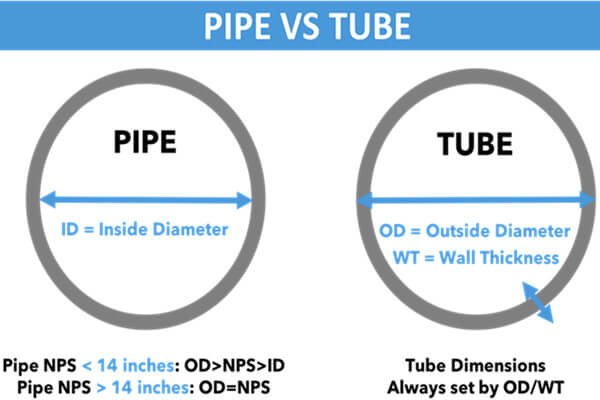
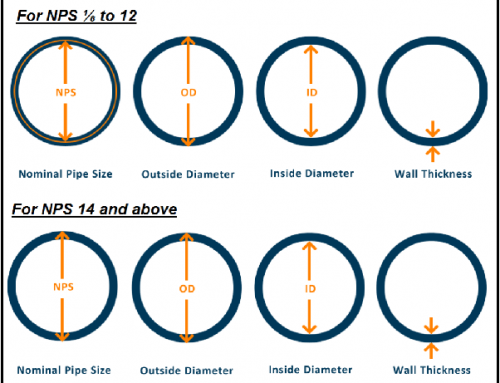
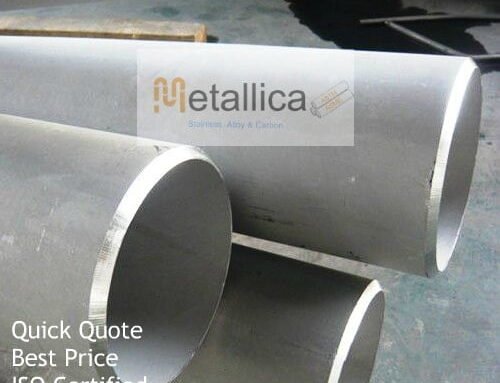
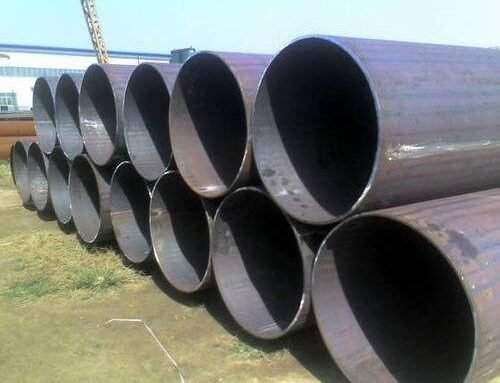
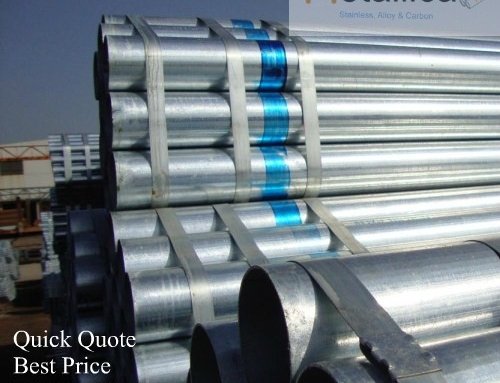
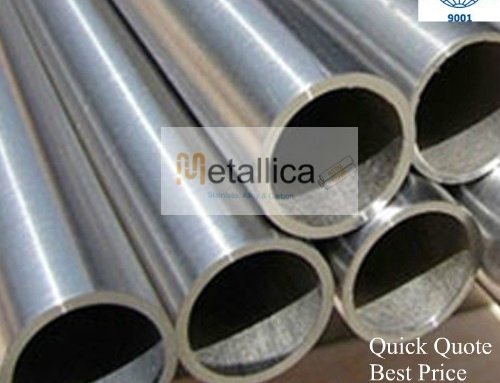
Leave A Comment